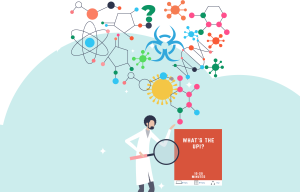Blog Category: Integrating Basic Science
Blogs Archive
April 23, 2020 |

Start Small: Six Activities to Get Started Integrating Basic Science and Clinical Learning
November 17, 2021 | Integrating Basic Science
WISE-OnCall is used by programs across medical and health professions education to help learners diagnose and manage clinical situations they are likely to encounter on clinical clerkships, advanced sub-internships, and during the transition to residency or practice. Here are some successful integration strategies that we’ve heard from faculty users…

Using Integrated Illness Scripts: Three Integration Stories
May 27, 2021 | Integrating Basic Science
WISE-OnCall is used by programs across medical and health professions education to help learners diagnose and manage clinical situations they are likely to encounter on clinical clerkships, advanced sub-internships, and during the transition to residency or practice. Here are some successful integration strategies that we’ve heard from faculty users…

Building on Basic Science: Integrated Illness Scripts as a Foundational Boundary-Crossing Curricular Tool
April 13, 2021 | Integrating Basic Science
WISE-OnCall is used by programs across medical and health professions education to help learners diagnose and manage clinical situations they are likely to encounter on clinical clerkships, advanced sub-internships, and during the transition to residency or practice. Here are some successful integration strategies that we’ve heard from faculty users…

The Pre-Clinical Pace: Using Cases for Early Learners
April 30, 2020 | Integrating Basic Science
If you want to use Aquifer cases as a clinical correlate in basic sciences classes just assign one case per week (e.g. pediatric case about cystic fibrosis in a genetics course; internal medicine case about anemia in hematology course). Students at UW have told me that this is about the right number of cases because the case content is complicated for early students. Students can work independently through the case and you can use it as context for discussion about how the basic science helps explain the clinical presentation–getting to the “why” behind how patients present as they do!
